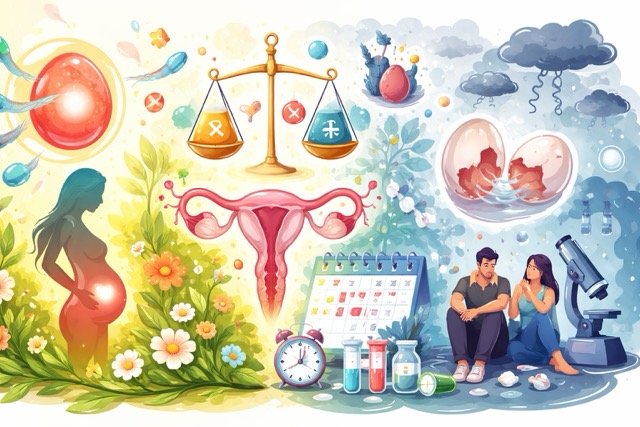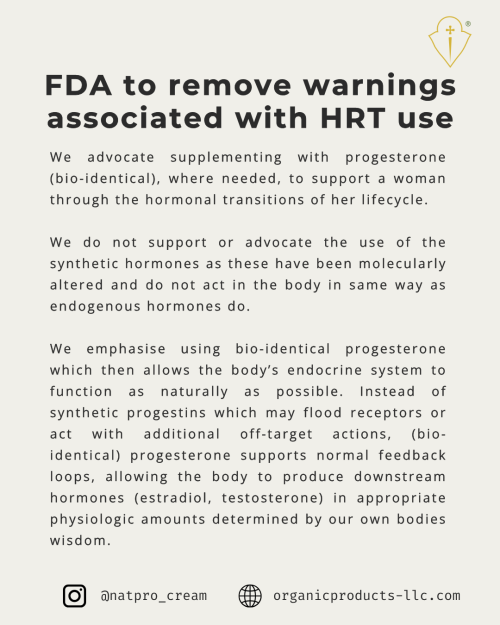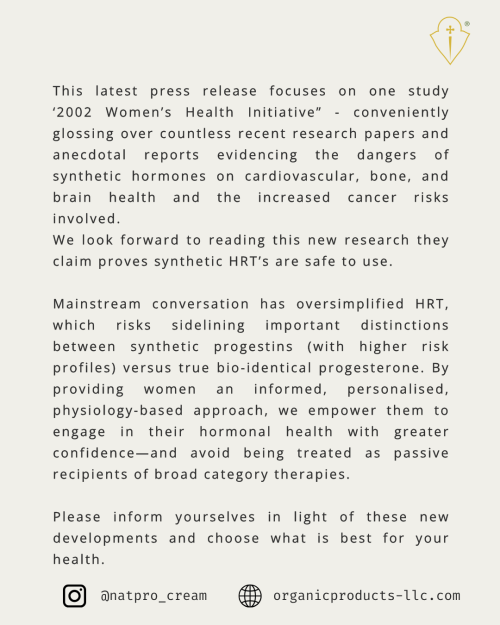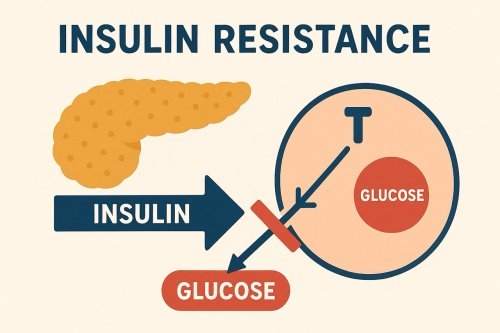Insulin resistance
Insulin resistance (IR) is defined as the inability to activate receptor sites on cells to receive glucose. In other words the cells are not responding to the message of insulin, which is needed before any glucose can enter a cell.
The beta-cells in the pancreas produce more insulin than is needed, in spite of normal or near normal blood glucose levels, a condition known as hyperinsulinaemia. This could be due to increased sensitivity of the pancreas. There could also be decreased clearance of insulin by the liver.
Insulin resistance is a syndrome where blood glucose levels are normal to slightly high. The significant result in any test is whether there is an impaired glucose response. Insulin levels can vary, but are normally elevated, particularly if insulin resistance is severe.
'Metabolic syndrome', 'Syndrome X', 'Reaven's syndrome', is an intermediate stage between insulin resistance and diabetes. Glucose and insulin levels are high.
Diabetes is a disease where blood glucose levels are high and insulin high, low or absent.
Insulin resistance can lead to metabolic syndrome, type 2 diabetes, heart disease, stroke, poly cystic ovaries, obesity. Unfortunately once these have developed, insulin resistance doesn't simply 'go away', it is still present, compounding the problem.
IR is also associated with anovulation, erratic periods, increased inflammatory cytokine levels, increased clotting, high LDL cholesterol, low HDL cholesterol, high triglycerides, excess weight around the waist, muscle weakness, brain fog, an inability to concentrate, to focus, to think clearly and high blood pressure.
IR prevents the formation of glycogen (the storage form of glucose) in the liver. It causes the liver, adrenals, thyroid, gut etc to malfunction and slow down.
High levels of blood glucose leads to increased glycation of proteins which causes changes in protein function in the body. Glycation leads to advanced glycation endproducts (AGEs), resulting in oxidative stress. This in turn leads to inflammation.
Estimates vary between 30-80% of individuals living in developed countries having it.
Although many authorities say the cause of insulin resistance is unknown, there are a number of known factors which do cause it.
Insulin resistance can be caused or affected by the following...
- Oxidative stress
- Inflammation
- A diet high in carbohydrates, particularly sugar, glucose, fructose, wheat which lead to glycation
- A lack of vitamin D
- An increase in parathyroid hormone
- Stress
- Drugs including the contraceptive pill and HRT
- Glucocorticoids have been implicated
- Growth hormone replacement therapy
- Tumor necrosis factor-alpha (TNF-) released during pregnancy and infections
- Inefficient leptin action
- Inefficient adiponectin action
- Glucosamine, used to treat osteoarthritis
- Pollution, particularly persistent organic pollutants (POPs)
- Bisphenol A and phthalate metabolites, both oestrogenic environmental contaminants
For references on factors influencing IR please see here.
Possible symptoms of insulin resistance...
- abdominal bloating
- acne
- addictions, alcohol abuse or craving
- alopecia
- anger, mood swings, irrational behaviour, aggression
- anxiety, agitation, nervousness, constant worry, tension, panic attacks, panicky
- caffeine needed to get going in the morning
- clumsiness
- constant hunger, appetite high, inability to tolerate long intervals without food
- cramping in legs
- cravings/binges for sweet things; sugar, breads, cakes etc
- depression
- dizziness
- dry and itching skin
- easily upset, quick to cry
- excessive facial and body hair on women
- excessive yawning
- exhaustion, chronic fatigue, tired all the time, stamina decreased
- frequent infections, poor skin healing
- fuzzy brain, mental confusion, inability to concentrate
- headaches
- high blood pressure
- high cholesterol, non-alcoholic fatty liver
- hot flushes, night sweats
- hypoglycaemia (low blood sugar)
- inability to eat breakfast
- increased abdominal fat
- infertility, difficulty in falling pregnant
- insomnia
- irritable, jittery, weak, tired or depressed if meals are skipped
- muscle weakness
- nausea, particularly in the morning
- palpitations, shaking, trembling
- PCO (poly cystic ovarian disease)
- swollen feet and/or ankles
- tendency to feel cold
- tight chest
- water retention
- weight gain, inability to loose weight
Blood sugar control
When food is eaten it travels through the gut, where it is broken down by various acids and enzymes, until it is reduced to a size small enough to pass through the gut wall into the blood stream.
In response to a carbohydrate meal, the beta cells in the pancreas secrete the hormone insulin to activate the cells into accepting the glucose.
Very simply, insulin is needed to shunt blood sugar or more correctly blood glucose into the cells for energy. If the cells are unresponsive to this 'knock on the door', the individual becomes tired, mentally and physically, as very little 'fuel' is getting into the cells for conversion to energy.
The rise in insulin is also a signal to the liver to convert glucose into glycogen, the stored form of glucose. This can be released instantly should it be needed. Unfortunately, with a trigger happy pancreas, releasing more insulin than is required, the liver will continue to convert the glucose into glycogen, but when it's storage capacity is full, it releases the glycogen into the blood stream. It is then absorbed by adipose (fat) cells, to store until times of famine occur.
This function is a leftover from the past and was in fact life saving. In times of famine we could live off the fat, now we no longer have famine, but we still have the same function and we live with the fat. Interestingly there are individuals with IR who do not put on weight, the reason for this is not known. Although possibly it's due to metabolism. There are some individuals who have a fast cellular metabolism, they respond badly to starchy, sugary foods and tend to put on weight easily if these are eaten.
With the glucose being absorbed by the liver and fat cells, the cells themselves unresponsive to insulin, the result is fatigue.
Medical treatment
The normal recommendation is weight loss and exercise. Difficult when two of the main symptoms are cravings and tiredness.
The anti-diabetic drug glucophage (Metformin), although only approved for diabetes, is frequently used for IR and PCO.
Natural treatment
The idea is to reverse the insulin resistance before diabetes, etc becomes a reality. It is possible to reverse it naturally, without resorting to the use of drugs.
No amount of good food or exercise helps, the cells simply aren't getting the food they need.
A combination of amino acids, minerals, vitamins, antioxidants are all needed to reverse it, aid in the insulin response, prevent tiredness, cravings and weight gain, lower triglycerides and assist in the energy transfer within the mitochondria.
ANH Feature: Are you one of the 60% eating yourself towards chronic disease?
This video is a 'must see'...
Sugar: The Bitter Truth
Progesterone
Progesterone is neuroprotective, it prevents lipid peroxidation and confers vascular protection.
Both the endogenous steroid cortisol and the widely prescribed glucocorticoid prednisolone, increases cholesteryl ester (CE) formation, leading to atherosclerosis, progesterone blocks this increase. In contrast to progesterone, estradiol was ineffective.
As an anti-inflammatory agent, progesterone has been shown to reduce the response of natural killer cells, the Th1 cytokine response, as well as other known initiators of inflammation.
Progesterone suppresses oestrogen, which is an excitatory hormone, a known initiator of inflammation.
Progesterone stimulates the production of IL-4 and IL-10, anti-inflammatory agents.
Progesterone increases levels of reduced glutathione and superoxide dismutase. Both powerful antioxidants.
Tumor necrosis factor-alpha is an inflammatory cytokine. Progesterone decreases both intracellular and secreted TNF-alpha, oestrogen has no effect.
If any emotional stress is being experienced, progesterone is excellent, as it activates the GABA receptor sites. This is an amino acid and also one of our most calming neurotransmitters. GABA itself is difficult to use, too much and symptoms return, it's far easier to use progesterone.
Taurine is another of our most calming neurotransmitters, a powerful sulphur amino acid like cysteine, it is also vital for the immune system, this should be considered too. It's vital for bile production, without it fats accumulate in the blood.
Progesterone is involved in the regulation of hypoglycaemia.
Women should use between 100-200mg of progesterone daily, men should use between 10-100mg/day.
For more information please see the web page on how to use progesterone.
Before using progesterone it's essential to first read the page on Oestrogen Dominance.
Please see here for more information on Nutrition and Diet.
Tests which should be considered...
Insulin resistance
There is no single test for IR, but the following are often tested...
- Blood pressure equal to or higher than 130/85 mmHg
- Fasting blood sugar (glucose) equal to or higher than 100 mg/dL or 5.55 mmol/L
- Elevated insulin levels, the normal range is 2.0-20 IU/mL or 14-140 pmol/L (Many believe it should be less than 10 IU/mL or 70 pmol/L)
- Elevated CRP - a marker for inflammation
- Large waist circumference - 35 inches or 87.5cm or more
- Low HDL cholesterol - Under 50 mg/dL or 1.3 mmol/L
- Triglycerides equal to or higher than 150 mg/dL or 1.79 mmol/L
Medline Insulin resistance
Lab Tests Online - Understanding insulin resistance
Glycated or glycosylated haemoglobin (HbA1c or A1C)
Normal 20-40 mmol/mol or 4%-5.8%
Vitamin D (low) (essential test)
The test should be done for 25-hydroxyvitamin D, also called calcidiol.
The following list gives an indication of levels of vitamin D found in the blood...
- Sufficient 50-100ng/ml or 124.80-249.60nmol/L
- Hypovitaminosis less than 30ng/ml or 75 nmol/L
- Deficiency less than 25ng/ml or 62.4nmol/L
Parathyroid hormone (possibly increased)
Normal values are 10-55 pg/mL or 10-55 ng/L
CRP (increased)
The level of CRP rises when there is inflammation throughout the body, normally none should be found. Levels if found, vary from 0.08 mg/L to 3.1mg/L or 0.76 to 28.5 nmol/L
Glucose (levels sometimes increased)
Normal levels are up to 100 mg/dL or 5.55 mmol/L
Persons with levels between 100 to 126 mg/dL or 5.55 mmol/L to 6.99 mmol/L may have impaired fasting glucose or insulin resistance.
Diabetes is diagnosed when fasting blood glucose levels are 126 mg/dL or 6.99 mmol/L and higher.
Cholesterol (sometimes increased)
Total cholesterol
- Desirable: Under 200 mg/dL or 5.18 mmol/L
- Borderline high: 200 to 239 mg/dL or 5.18 mmol/L to 6.19 mmol/L
- High risk: 240 mg/dL and higher or 6.21 mmol/L
HDL cholesterol
- Levels should be >40 mg/dL or 1.04 mmol/L
- Men are at particular risk if their HDL is below 37 mg/dL or 0.96 mmol/L
- Women are at particular risk if their HDL is below 47 mg/dL or 1.22 mmol/L
LDL cholesterol
- Optimal: Less than 100 mg/dL or 2.59 mmol/L
- Near Optimal: 100 - 129 mg/dL or 2.59 mmol/L to 3.34 mmol/L
- Borderline High: 130 - 159 mg/dL or 3.38 mmol/L to 4.12 mmol/L
- High: 160 - 189 mg/dL or 4.14 mmol/L to 4.90 mmol/L
- Very High: 190 mg/dL and higher or 4.92 mmol/L
Triglycerides (sometimes increased)
- Normal: Less than 150 mg/dL or 1.79 mmol/L
- Borderline High: 150 - 199 mg/dL or 1.79 mmol/L to 2.25 mmol/L
- High: 200 - 499 mg/dL or 2.26 mmol/L to 5.64 mmol/L
- Very High: 500 mg/dL or above or 5.65 mmol/L
Reference papers
Arch Dis Child. 2011 May;96(5):447-52
A cross-sectional study of vitamin D and insulin resistance in children
Medscape October 19, 2010
Prepregnancy Metabolic Status May Predict Subsequent Gestational Diabetes
Obesity 18, 604-610 (March 2010)
Testosterone and Visceral Fat in Midlife Women: The Study of Women's Health Across the Nation (SWAN) Fat Patterning Study
Arch Intern Med. 2008;168(14):1568-1575
Menopause and the Metabolic Syndrome
J Clin Invest. 2007 December 3; 117(12): 39793987
Monosaccharide-induced lipogenesis regulates the human hepatic sex hormonebinding globulin gene
Environ Health Perspect. 2006 Jan;114(1):106-12
The estrogenic effect of bisphenol A disrupts pancreatic beta-cell function in vivo and induces insulin resistance
Salk Institute Press Releases March 07, 2008
Chronically elevated blood sugar levels disable "fasting switch"
Journal of Agricultural and Food Chemistry (doi: 10.1021/jf071993o). 2008, Volume 107, Issue 3, Pages 1039-1044
Satiety in rats following blueberry extract consumption induced by appetite-suppressing mechanisms unrelated to in vitro or in vivo antioxidant capacity
ScienceDaily (Apr. 10, 2008)
Dietary Oil May Need Help In Avoiding Any Side Effects Of Weight Loss, Study Suggests
British Journal of Nutrition 2008, Volume 99, Issue 6, Pages 1380-1387
Effect of two doses of a mixture of soluble fibres on body weight and metabolic variables in overweight or obese patients: a randomised trial
British Journal of Nutrition. Published online ahead of print, 11 Apr 2008
Effects of lifelong intervention with an oligofructose-enriched inulin in rats on general health and lifespan
Diabetologia. 2008 Jan;51(1):165-74. Epub 2007 Nov 17.
R-alpha-Lipoic acid and acetyl-L-carnitine complementarily promote mitochondrial biogenesis in murine 3T3-L1 adipocytes.
American Journal of Clinical Nutrition December 2007, Volume 86, Pages 1738-1744
L-Carnitine treatment reduces severity of physical and mental fatigue and increases cognitive functions in centenarians: a randomized and controlled clinical trial
Metabolism Volume 56, Issue 6, June 2007, Pages 830-837
Addition of medroxyprogesterone acetate to conjugated equine estrogens results in IR in adipose tissue
Diabetes 56:1198-1209, 2007
Genetic Influences of Adiponectin on Insulin Resistance, Type 2 Diabetes, and Cardiovascular Disease
Eur Rev Med Pharmacol Sci 2007; 11 (5) : 347-354
Randomized, double blind placebo-controlled trial: effects of Myo-inositol on ovarian function and metabolic factors in women with PCOS
Environmental Health Perspectives Volume 115, Number 6, June 2007
Concentrations of Urinary Phthalate Metabolites Are Associated with Increased Waist Circumference and IR in Adult U.S. Males
Am J Med Sci. 2007 Jun;333(6):333-9.
Oral glucosamine in doses used to treat osteoarthritis worsens insulin resistance
University of California, San Diego, News Centre, November 6, 2007
UCSD Researchers Discover Inflammation, Not Obesity, Cause of IR
Journal of Epidemiology and Community Health 2007; 61 :695-698
Milk and dairy consumption, diabetes and the metabolic syndrome: the Caerphilly prospective study
CANCERactive. Originally published in icon Issue 1 2007
IR: How Healthy Eating Can Have Positive Impact on Cancer Prognosis
Expert Reviews in Molecular Medicine (2006), 8:1-12
Adiponectin, type 2 diabetes and the metabolic syndrome: lessons from human genetic studies
Ann Intern Med. 2006 Apr 18;144(8):554-62.
The relationship between green tea and total caffeine intake and risk for self-reported type 2 diabetes among Japanese adults.
Diabetes Care 29:300-305, 2006
Altered D- Chiro -Inositol Urinary Clearance in Women With Polycystic Ovary Syndrome
San Francisco Medicine, 2005
Our Stolen Future: A Decade Later
Gynecol Obstet Invest 2004;58:160-163 (DOI: 10.1159/000079553)
Aberrant Serum Adiponectin Levels in Women with Uterine Leiomyomas
Experimental Biology and Medicine 229:486-493 (2004)
Role of Fatty Acid Composition in the Development of Metabolic Disorders in Sucrose-Induced Obese Rats
The Journal of Clinical Endocrinology & Metabolism. 2003, Vol. 88, No. 4 1455-1463
Growth Hormone Replacement Therapy Induces IR by Activating the Glucose-Fatty Acid Cycle
N Engl J Med. 2002 Feb 7;346(6):393-403.
Reduction in the incidence of type 2 diabetes with lifestyle intervention or metformin
Journal of Vascular Surgery Volume 36, Issue 4, October 2002, Pages 833-838
Progesterone inhibits human infragenicular arterial smooth muscle cell proliferation induced by high glucose and insulin concentrations
International Journal of Obesity June 2002, Vol 26, Number 6, Pages 747-753
Upper abdominal obesity, insulin resistance and breast cancer risk
Diabetes 51:2207-2213, 2002
TNF-± Is a Predictor of IR in Human Pregnancy
Diabetes 51:7-18, 2002 Banting Lecture 2001
Dysregulation of Fatty Acid Metabolism in the Etiology of Type 2 Diabetes
Human Reproduction, Vol. 16, No. 9, 1827-1832, September 2001
Oestradiol plus progesterone treatment increases serum leptin concentrations in normal women
Human Reproduction vol 15, no 11, pp 2383-2387, 2000
Treatment of normal women with oestradiol plus progesterone prevents the decrease of leptin concentrations induced by ovariectomy
The New England Journal of Medicine. Volume 340:1314-1320 April 29, 1999 Number 17
Ovulatory and Metabolic Effects of d-Chiro-Inositol in the Polycystic Ovary Syndrome
Proc Natl Acad Sci U S A. 1993 November 1; 90 (21) : 9988-9992.
D-chiro-inositol metabolism in diabetes mellitus
Nutrition Volume 13, Issue 9, September 1997, Pages 795-803
Body fat distribution, IR, and metabolic diseases
Diabetes. 1988 Dec;37(12):1595-607.
Banting lecture 1988. Role of IR in human disease
Journal of Clinical Endocrinology & Metabolism, Vol 64, 180-184, Copyright © 1987 by Endocrine Society
The effects of hyperinsulinemia on serum testosterone, progesterone, dehydroepiandrosterone sulfate, and cortisol levels in normal women and in a woman with hyperandrogenism, insulin resistance, and acanthosis nigricans
Journal: Acta Diabetologica Issue Volume 21, Number 1 / March, 1984
Effect of estrogens on blood sugar, serum insulin and serum free fatty acids, and pancreas cytology in female dogs
 If you are feeling confused or overwhelmed by fertility challenges, or wondering if hormone balance might be affecting your ability to conceive you are not alone—many women and couples face uncertaint…
If you are feeling confused or overwhelmed by fertility challenges, or wondering if hormone balance might be affecting your ability to conceive you are not alone—many women and couples face uncertaint…
 _____
_____ Feeling tired, foggy, or struggling with stubborn weight gain—especially around the waist? You might be surprised to learn that these symptoms could be linked to insulin resistance, a condition that a…
Feeling tired, foggy, or struggling with stubborn weight gain—especially around the waist? You might be surprised to learn that these symptoms could be linked to insulin resistance, a condition that a… Are you struggling with irregular cycles, unwanted hair growth, or unexplained fatigue? You’re not alone. Polycystic Ovarian Syndrome (PCOS) affects up to 10% of women of reproductive age—and many mor…
Are you struggling with irregular cycles, unwanted hair growth, or unexplained fatigue? You’re not alone. Polycystic Ovarian Syndrome (PCOS) affects up to 10% of women of reproductive age—and many mor…